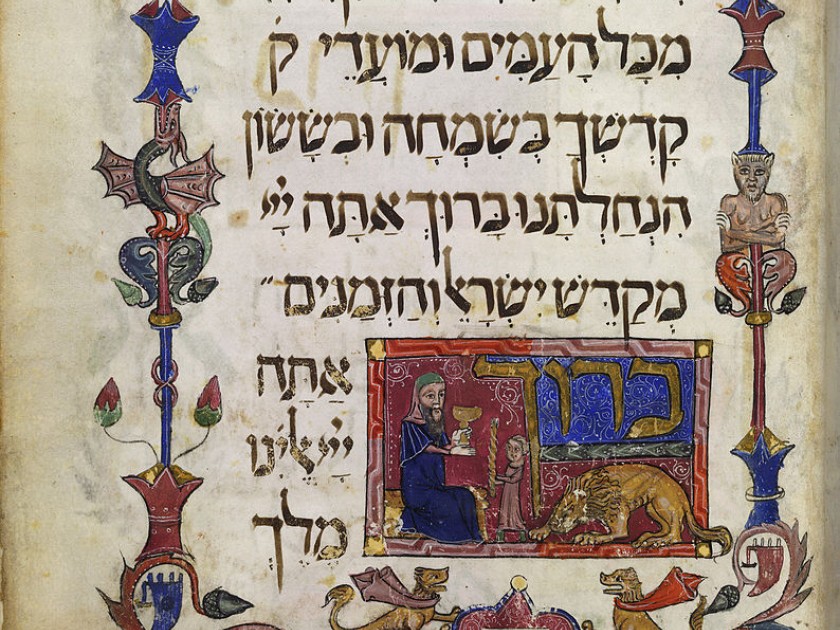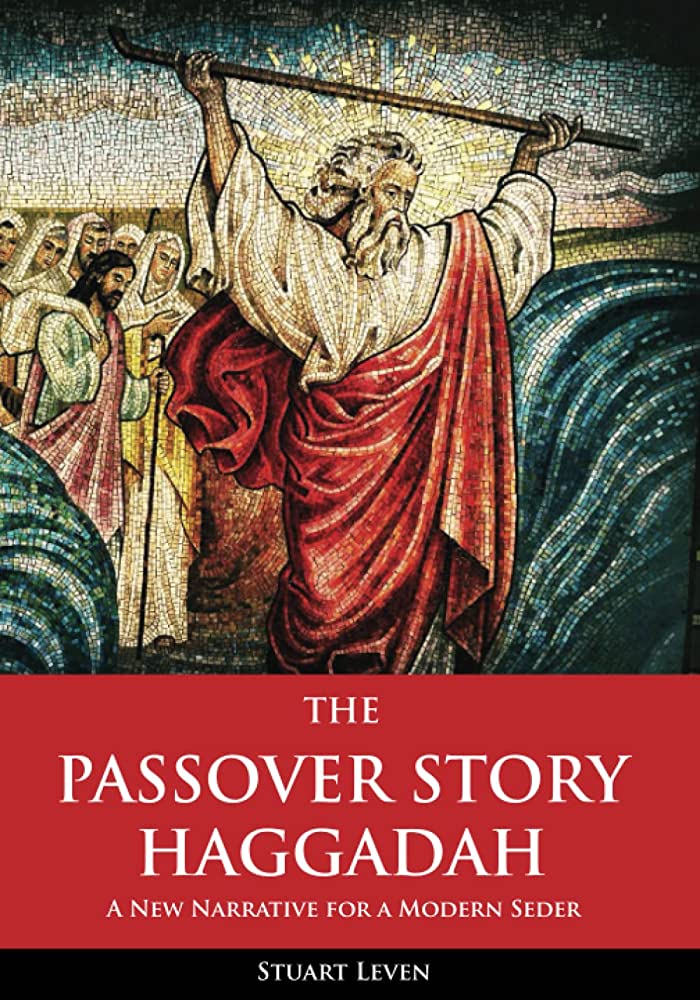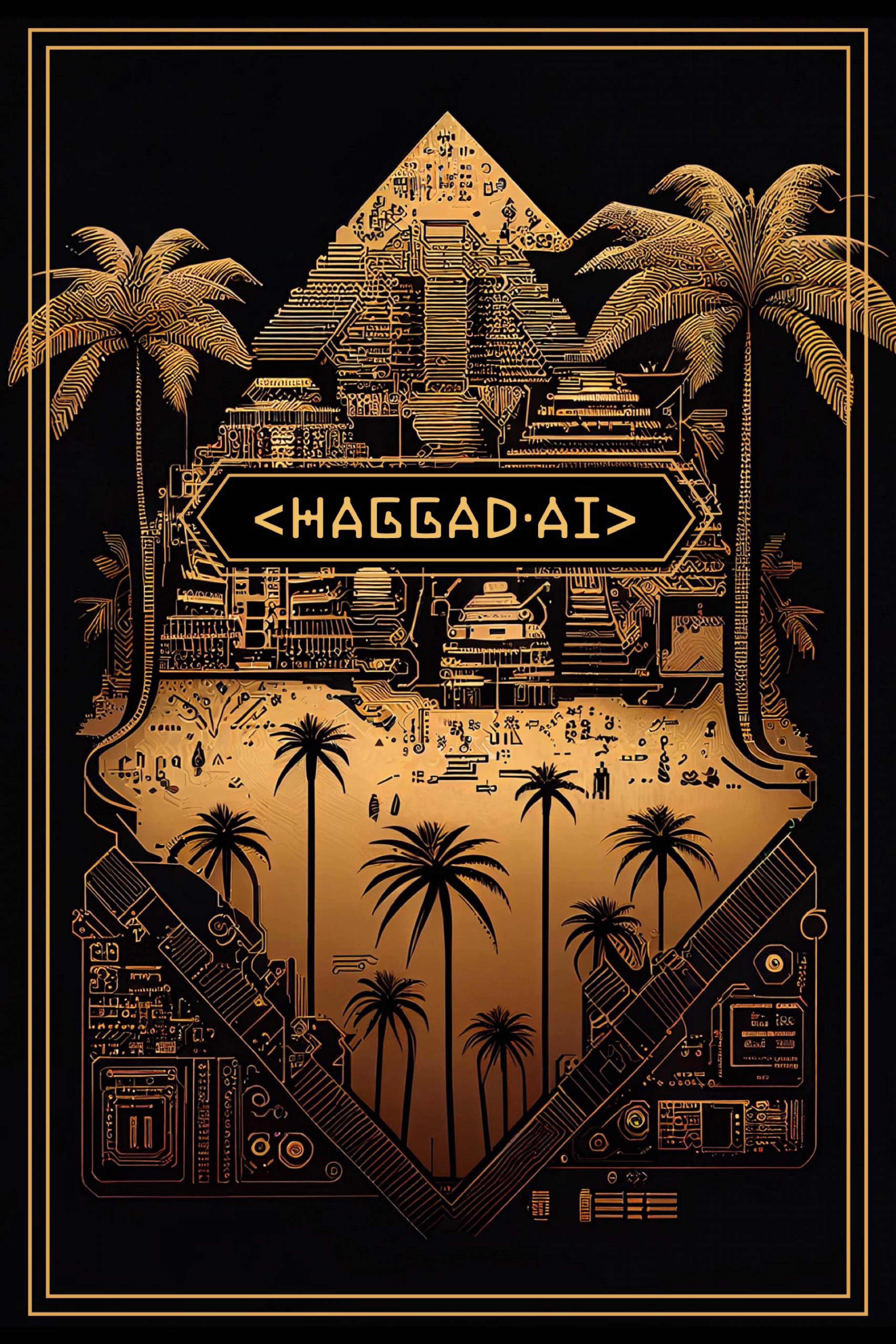
Havdalah ceremony in the Barcelona Haggadah, 1300s
British Library
We’re highlighting a couple of new Haggadot that have blossomed this spring, just in time for Passover 5783/2023 celebrations. If you’re curious to see other Haggadot published in the past several years, check out our Passover 5782/2022 Haggadah Roundup, Passover 5781/2021 Haggadah Roundup, and Passover 5780/2020 Haggadah Roundup.
—JBC Editorial Team

The Passover Story Haggadah: A New Narrative for a Modern Seder
by Stuart Leven
In his introduction, Stuart Leven quotes author Abigail Pogrebin on the Passover story, “‘The Exodus is an epic story of oppression, resolve, and deliverance. The problem has always been, at least to my mind, that somehow the storyline gets lost in the Haggadah.’”
Leven echoes this sentiment and expresses his appreciation for the Haggadah, while recognizing that the traditional text focuses on sharing rabbinic commentary about the Exodus rather than the event itself.
The author’s The Passover Story Haggadah: A New Narrative for a Modern Seder replaces the traditional maggid section with a retelling of the Exodus, weaving it into the traditional signposts of the seder in a seamless way. He also adds a section in recognition of Miriam, updates the reading for Elijah’s Cup, includes a new version of The Four Sons allegory (now titled The Five Children), and abbreviates sections such as barech (Grace after Meals), and hallel (Praise). The text is offered primarily in English, without additional commentary, with selected sections in Hebrew and Hebrew transliteration. The appendix includes an excerpt from the Book of Exodus, to share the story of Moses’ birth and early experience in Egypt. Black and white images of biblical scenes and pages from traditional Haggadot are interspersed throughout the book.
Leven’s Haggadah is valuable in placing the Exodus and its main characters back into the center of the narrative. Seder participants seeking that clarity will enjoy using this updated and modernized text.

HAGGAD.AI
Conjured by Royi Shamir and Yitz Woolf
HAGGAD.AI is the first Passover Haggadah to be developed using artificial intelligence. It is the creation of Royi Shamir, an architect, and Yitz Woolf, a graphic and web designer, both living in Jerusalem.
Shamir and Woolf used complex prompts in ChatGPT (a large language model chat bot), and Midjourney (a digital image generator) to generate written and visual commentary on the traditional text of the Haggadah. The written text reads with the fluidity of a human-generated commentary. Similarly, the resulting images created by Midjourney reflect the themes of the Haggadah in surprising and varied ways.
A reader is guided through HAGGAD.AI by RABB.AI, a character also generated by artificial intelligence, whose introduction warns us about the opportunities and challenges in using AI to generate fresh insights into ancient understandings. RABB.AI writes in the introduction:
On the one hand, my commentary can provide a fresh perspective on the text, uncovering connections and insights that may not be immediately apparent to the human reader…it is important to note that my commentary is limited by its reliance on pre-existing data and programming.
Exploring HAGGAD.AI raises a critical question about authenticity. Neither ChatGPT nor Midjourney understand the experience of a seder or have grappled with the themes found in the text. While the commentary can catalyze us to consider these themes, does knowing that the author or artist is disconnected from the commentary’s meaning change its impact? How does this understanding change the editorial role of Shamir and Woolf, who identify themselves as “conjurers” in the creation of this groundbreaking text?
As a whole, HAGGAD.AI is visually appealing and easy to navigate, and provides the reader with a wealth of material from which to generate meaningful conversation at the seder table, both about the themes of Passover and a reader’s response to the computer-generated product placed before them. Its publication also opens a larger question about the role of artificial intelligence in artistic endeavors and the Jewish experience.